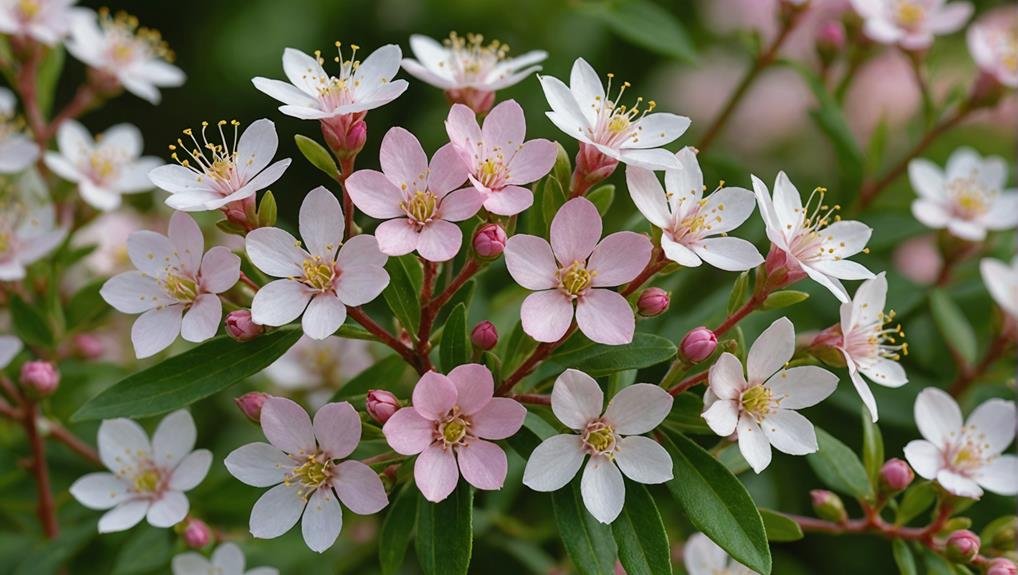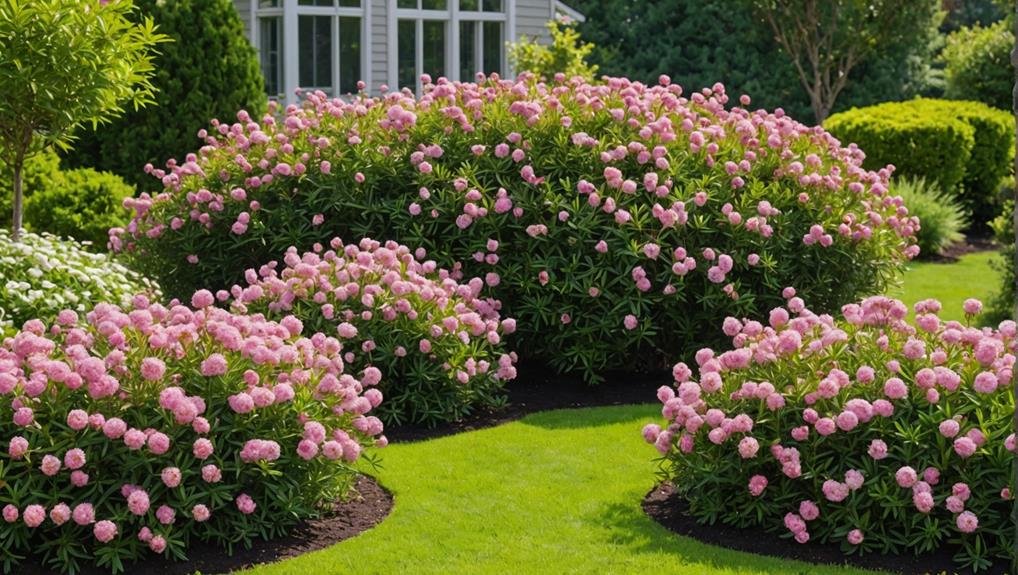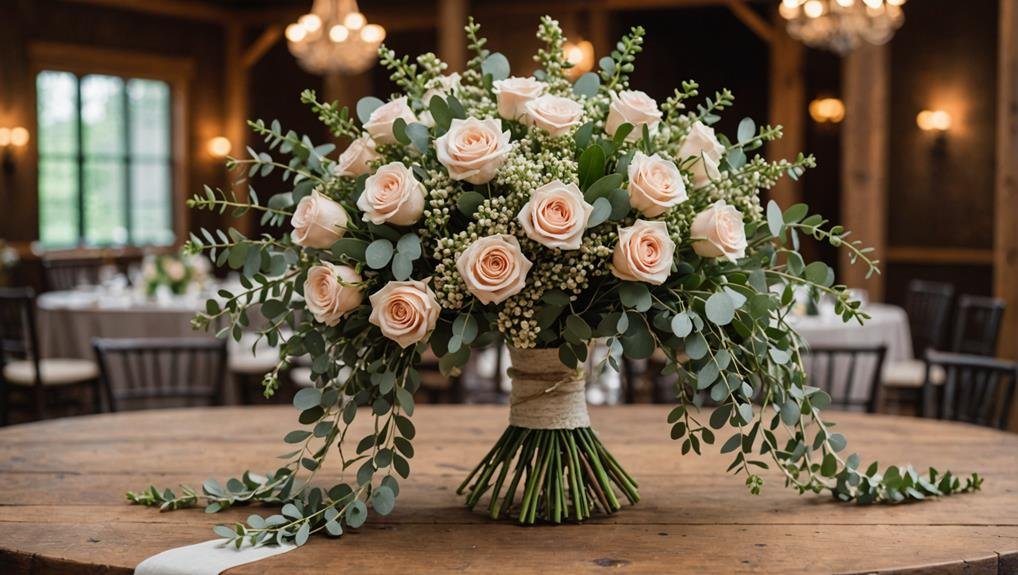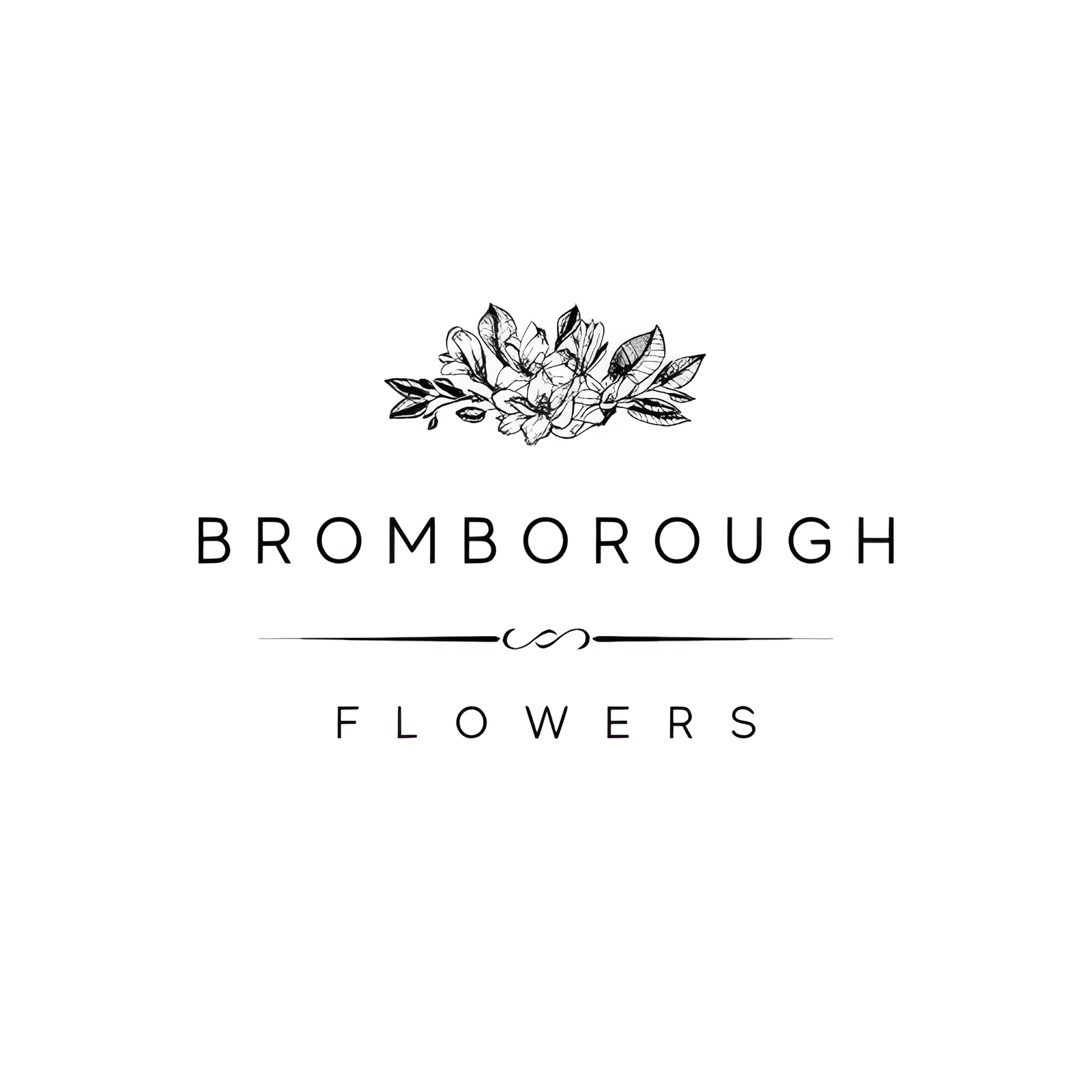When planning a wedding, the selection of flowers plays a pivotal role in setting the desired ambiance, and Waxflower stands out as a unique choice for various reasons. Known for its small, star-shaped blooms and resilient waxy foliage, Waxflower offers versatility and elegance that can enhance diverse wedding themes, from rustic to boho. With a rich symbolism of lasting success and enduring love, this filler flower pairs wonderfully with popular choices like roses and tulips. Understanding the full potential of Waxflower in wedding arrangements requires examining its physical characteristics, cultural significance, and ideal pairings.
Flower Overview

Waxflower, scientifically known as Chamelaucium uncinatum, is a versatile and popular filler flower in floristry, renowned for its delicate appearance and waxy petals. Native to Western Australia, this member of the Myrtaceae family has become a staple in floral arrangements worldwide. Its stems, which can range from 60cm to 120cm in length, offer flexibility in various floral designs, making it an ideal choice for both large and small arrangements.
In the context of weddings, waxflower is particularly favored. Its ability to complement various other flowers without overwhelming them makes it a preferred filler flower for bridal bouquets, centerpieces, and other decorative elements. The waxy texture of the petals adds a unique touch, imparting a subtle elegance to any floral composition. White waxflower, in particular, is highly sought after for weddings due to its romantic and classic appeal.
In the UK, most waxflower is imported from Israel, ensuring its availability in a range of colors such as pinks, white, cream, cerise, and burgundy. This variety in hues allows for creative versatility, enabling florists to craft bespoke arrangements that perfectly match the theme and color palette of any wedding.
Physical Description
Characterized by its small, star-shaped flowers and fine, needle-like foliage, Chamelaucium uncinatum presents a delicate and charming aesthetic in floral arrangements. Commonly referred to as Waxflower, this genus from the Myrtaceae family is indigenous to Western Australia and is renowned for its resemblance to the tea-tree plant, Leptospermum.
The flowers themselves are notable for their unique waxy feel, which gives them a durable and almost glossy appearance, making them a popular choice for wedding bouquets and centerpieces.
Waxflower stems can range in length from 60cm to 120cm, accommodating various design needs. They are frequently employed as filler flowers, providing texture and volume to floral compositions without overpowering the primary blooms. This versatility is particularly evident in the use of white waxflower, which is highly sought after in wedding arrangements for its pristine and elegant look.
The plant's fine, needle-like foliage adds a soft, feathery texture that complements its delicate blooms. Whether used in bouquets, boutonnieres, or larger installations, Waxflower's modest yet striking appearance makes it a favorite among florists and brides alike, enhancing the overall visual appeal of any floral design.
Available Colour Varieties

In addition to its versatile physical attributes, Waxflower offers a diverse palette of colors, including pink, white, cream, cerise, and burgundy. This wide-ranging color variety makes Waxflower a preferred choice for wedding florals, as it can effortlessly complement various wedding themes and color schemes.
Among these options, white Waxflower stands out as particularly popular for wedding arrangements. Its pristine hue symbolizes purity and elegance, making it an ideal filler flower for bridal bouquets and centerpieces.
The creamy tones of cream Waxflower offer a softer alternative, providing a warm and subtle touch to floral compositions.
On the other hand, pink Waxflower introduces a gentle, romantic vibe, perfect for spring and summer weddings. For those seeking more dramatic or bold accents, cerise and burgundy Waxflower provide deeper, richer tones that can add depth and contrast to the overall floral design.
In UK wholesale markets, most Waxflower is imported from Israel, ensuring a steady supply of high-quality blooms. With stem lengths varying from 60cm to 120cm, florists have the flexibility to incorporate Waxflower into various arrangements, from petite bouquets to grand installations, enhancing their versatility and appeal in wedding floral design.
Latin Name and Taxonomy
The scientific name for Waxflower is Chamelaucium uncinatum, a species belonging to the Myrtaceae family and native to Australia. The Myrtaceae family, which also includes other well-known plants like eucalyptus and myrtle, is characterized by aromatic leaves and flowers with a waxy texture.
The petals of the Waxflower are particularly notable for their waxy appearance, which contributes to the plant's common name. This unique texture not only adds a distinctive touch to floral arrangements but also resembles the tea-tree plant Leptospermum, another member of the Myrtaceae family.
Chamelaucium uncinatum is often referred to simply as wax flower or waxplant, highlighting its waxy petals that come in a variety of colors including pinks, white, cream, cerise, and burgundy. The versatility and aesthetic appeal of these petals make Waxflower a popular choice in wedding bouquets and other floral displays.
As a filler flower, Waxflower complements a wide range of other blooms, adding texture and depth to arrangements. Its botanical classification within the Myrtaceae family and the distinctive characteristics of its petals make Waxflower a remarkable addition to any floral composition.
Geographical Origins

Native to the diverse landscapes of Western Australia, Waxflower thrives in heathland environments near the coastal regions. Belonging to the Myrtaceae family, this resilient plant is well-adapted to the sandy, nutrient-poor soils typically found in these areas. Its natural habitat provides the ideal conditions for its growth, allowing it to flourish and produce its distinctive waxy petals, which bear a striking resemblance to those of the tea-tree plant, Leptospermum.
While the primary geographical origins of wax flowers are in Australia, their cultivation has expanded globally due to their popularity in the floral industry. Importantly, Israel has become a significant player in the commercial production of wax flowers. The country's advanced agricultural techniques and favorable climate conditions have enabled it to supply a substantial portion of wax flowers to international markets, including the UK wholesale flower markets.
This international expansion has made wax flowers more accessible to florists and consumers worldwide. Available in a variety of colors such as pinks, white, cream, cerise, and burgundy, wax flowers have become a versatile choice for various floral arrangements, particularly in wedding decor. Their enduring beauty and resilience continue to captivate floral enthusiasts globally.
Season Availability
Waxflower's adaptability across various climates contributes to its year-round availability, making it an indispensable choice for weddings and events regardless of the season. This versatility guarantees that couples can incorporate waxflower into their wedding flowers, no matter the time of year. For those planning fall weddings, the cooler weather provides an ideal environment for waxflower, accentuating its natural beauty and robustness.
Though waxflower thrives in cooler temperatures, it also enjoys peak seasons during spring and summer. During these warmer months, an abundance of fresh blooms becomes available, offering a rich selection for wedding arrangements. This seasonal availability means that whether a couple is planning a spring garden wedding or a cozy winter ceremony, high-quality waxflower can be sourced to meet their needs.
However, it is important to note that availability may vary depending on location and local growing conditions. To ensure peak freshness and quality, couples should consider the season when planning to use waxflower in their wedding decor. Consulting with a florist who understands the local climate and supply chain can help in securing the best blooms, guaranteeing that waxflower remains a stunning addition to any wedding celebration.
Growing Conditions

Thriving in heathland conditions near coastal regions of Australia, waxflower requires well-drained soil and full sunlight for optimal growth. This evergreen shrub adapts well to arid environments and can thrive in sandy or rocky substrates.
For those interested in cultivating waxflower for DIY floral projects or professional floral designs, it is vital to replicate its natural conditions as closely as possible. Waxflower benefits from minimal irrigation once established, reflecting its native resilience to dry climates. Regular pruning encourages a denser growth habit and more abundant blooming, which is particularly beneficial for floral arrangement purposes.
Maintaining appropriate spacing between plants allows for sufficient air circulation, reducing the likelihood of disease. In commercial settings, waxflower is frequently imported from Israel, where controlled growing conditions guarantee high-quality stems. These stems, ranging from 60cm to 120cm in length, provide flexibility for various floral designs, whether for wedding bouquets or everyday arrangements.
The plant's range of colors, including pinks, whites, creams, cerises, and burgundies, adds a delicate yet lively touch to any DIY floral project. By comprehending and implementing these growing conditions, one can cultivate waxflower to its maximum potential, guaranteeing a consistent supply for all floral arrangement needs.
Cultural Significance
Beyond its ideal growing conditions, waxflower holds profound cultural significance as a symbol of lasting success, patience, and enduring love. Native to Australia and part of the myrtle family, this dainty yet resilient flower embodies qualities of perseverance and resilience, making it a cherished choice in floral arrangements.
The waxflower's cultural symbolism is particularly meaningful in rustic, country, and boho-inspired weddings and events, where its presence underscores themes of enduring commitment and steadfastness.
Incorporating waxflower into DIY projects, such as wedding décor, dinner party tables, and special event banquet dinners, lends a touch of cultural significance that resonates deeply with these themes. Its delicate yet sturdy nature makes it an ideal candidate for these DIY floral projects, adding both aesthetic beauty and symbolic depth.
Waxflower's connection to the myrtle family further enhances its cultural importance, as myrtle itself has long been associated with love and marriage in various traditions.
Typical Use in Weddings

In weddings, waxflower is often utilized as a versatile filler flower that enhances bouquets, centerpieces, corsages, and boutonnieres with its delicate appearance and vibrant colors. Its adaptability makes it a favored choice for various wedding themes, including rustic, country, boho-inspired, and romantic settings. The symbolism of waxflower, representing lasting success, patience, and enduring love, adds an extra layer of elegance and charm to any wedding arrangement.
Waxflower is frequently paired with roses, tulips, and baby's breath to create visually appealing and cohesive floral designs. This filler flower is particularly popular in DIY wedding bouquets, where its versatility allows for seamless integration into different color schemes and decor styles. Available in hues like pink, white, and lavender, waxflower can complement an array of wedding palettes.
Here are some common uses of waxflower in weddings:
| Use Case | Description | Examples |
|---|---|---|
| Bouquets | Enhances main flowers with delicate accents | Bridal bouquets, bridesmaid bouquets |
| Centerpieces | Adds texture and color | Table centerpieces, altar arrangements |
| Corsages | Provides a soft, elegant touch | Mother of the bride/groom corsages |
| Boutonnieres | Complements main flowers for a cohesive look | Groom and groomsmen boutonnieres |
The enduring popularity of waxflower in wedding arrangements underscores its pivotal role in creating memorable and visually stunning celebrations.
Alternative Flower Types
Exploring alternative flower types to waxflower can introduce new textures, colors, and styles to wedding floral arrangements.
One popular choice is baby's breath, known for its delicate white flowers that can add a soft, romantic touch to any bouquet. This flower is particularly favored in DIY wedding flowers due to its versatility and ease of use.
Another excellent option is limonium, which provides a splash of color with its purple or pink blooms. Its subtle hues can complement a wide range of color palettes, making it a versatile addition to big floral displays or intimate arrangements.
Astilbe is another alternative that brings a fluffy, feathery texture to floral designs, adding volume and a touch of whimsy.
For those seeking a more intricate and lacy look, Queen Anne's lace is an ideal choice. This flower's delicate appearance can enhance the elegance of centerpieces and bouquets.
Mixing and matching these alternative flowers not only diversifies the visual appeal but also allows for the creation of unique and stunning floral designs that can be tailored to suit any wedding theme or style.
